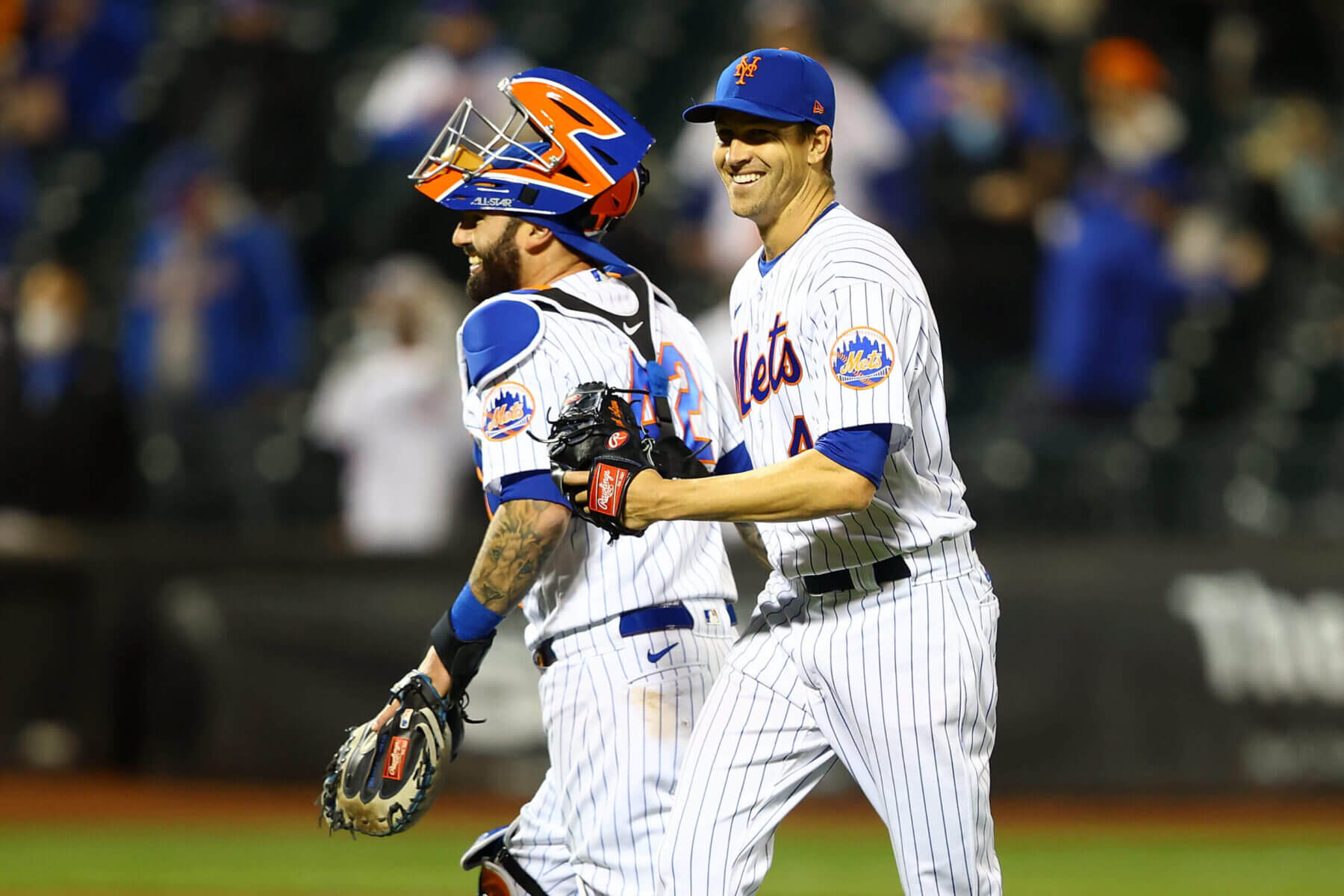The New York Mets excel at irony, and so, of course, they will welcome back their last ace pitcher to Queens at the precise moment they could use someone like him the most. As New York coughs away ground in the wild-card race with night after night of subpar starting pitching, Jacob deGrom will start in road grays at Citi Field on Friday night.
DeGrom arrives at the tail end of his first healthy season in the last five. He’s been very good this year for the Texas Rangers. His 2.78 ERA entering Friday is fourth-best in the American League, and he’s got a decent shot of getting Cy Young votes, as he did in six of his eight years with the Mets.
Then again, he hasn’t been good or healthy enough over the past three years to make the Mets regret his decision to leave after 2022.
Here in 2025, deGrom’s legacy with the Mets can feel more complicated than it should be. Time has yet to fully soften the feeling of his departure after that 2022 season, which itself ended so disappointingly for the pitcher and for the team.

Jacob deGrom celebrates after striking out 15 in a 6-0 complete game victory in 2021. (Mike Stobe / Getty Images)
Eventually, though, we’re likely to reach a point where we properly recognize that deGrom was one of the club’s greatest players ever, that his run of dominance from 2018 through his injury in 2021 was as good as anyone in the modern game has produced, that he owns one of the great performances in a playoff series that the team has ever had, and that his No. 48 shouldn’t be worn by any other Met.
The case for deGrom to have his number retired, unlike his intriguing but difficult case to make the Hall of Fame, requires no real mental gymnastics.
DeGrom has pretty sure footing as a top-four pitcher in Mets history; some may place him as high as second, ahead of Dwight Gooden, others might have him fourth behind Jerry Koosman. Tom Seaver tops the list without argument. All of those guys have their numbers retired, for what it’s worth.
DeGrom is the Mets’ all-time leader in most any rate stat: ERA, WHIP, strikeout rate, strikeout-to-walk ratio, etc. He is third in wins above replacement, fourth in strikeouts and seventh in games started and wins, the latter ranking attributable to a comical lack of team support during his best seasons.
He was excellent in his too-few postseason starts, winning four of five. DeGrom’s two starts in the 2015 NLDS, when he outdueled Clayton Kershaw and Zack Greinke, rank among the greatest in the franchise’s October history.
And deGrom’s dominant period, from 2018 through his injury in July 2021, should cement his place in Mets history. During that time he was, without question, the best pitcher in baseball. His adjusted ERA-plus was 205 — meaning he prevented runs twice as well as the average pitcher. That’s a better four-year stretch compared to the league than any posted by Randy Johnson, Greg Maddux or Sandy Koufax.
DeGrom’s sustained time on the injured list over his last two years with the Mets and his first two with the Rangers has retconned his reliability before that stretch. He led the majors in innings from 2018 to 2020, when he was also far and away its leader in ERA. (He was 12th in baseball in innings during the entirety of his Mets’ tenure and second in ERA, behind only Kershaw.)
At various points in that four-year period, deGrom made it reasonable to think he could challenge Bob Gibson’s 1.12 ERA from 1968. That felt most real in 2021, just before he went down. That’s when deGrom carried a sub-1.00 ERA into July and earned Cy Young votes even when he didn’t start after the All-Star break.
That deGrom didn’t pile up wins during those years — he went 32-21 over those 91 starts — was due less to any flaw in his game than to a teamwide collapse when he pitched. It’s not like deGrom was a five-and-dive starter; he pitched at least seven innings in more than half his starts during those four years.
Inconceivably, the Mets went 14-18 in deGrom starts when he won the Cy Young in 2018 — and then did it again when he won the Cy Young a second time in 2019. A bad offense was worse when deGrom started. A bad bullpen was worse when it pitched after deGrom. A bad team was somehow worse when the sport’s best pitcher plied his trade for it.
Which is why it remains understandable, in part, that deGrom didn’t always embrace playing for the Mets. This is the organization that turned his period of dominance into a metaphor of meaninglessness — to nearly perfect one’s craft only to watch it undercut, start after start, season after season, by your purported teammates.
It’s the organization that, after his agent demanded a trade or a contract extension, hired the agent away to negotiate that extension on its behalf instead of his. The five-year deal deGrom signed with Texas after opting out revealed just how team-friendly the initial extension had become.
The Mets’ policy on retiring numbers has eased over the last seven years. Koosman and Gooden joined Seaver up there as starters. Keith Hernandez, Darryl Strawberry, Willie Mays and David Wright joined Mike Piazza as position players. Strawberry’s departure in free agency was also bitter. Wright’s tenure was marred late by injuries, too. DeGrom played more years in Queens than half the players on the façade: Piazza, Strawberry, Hernandez and of course Mays.
No, it may not feel like a no-brainer today. It will years from now, on some summer Saturday, when they play “Simple Man” at Citi Field one more time.
(Photo of Jacob deGrom: Stacy Revere / Getty Images)
